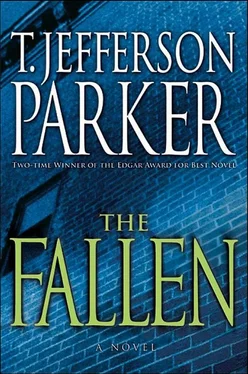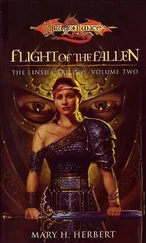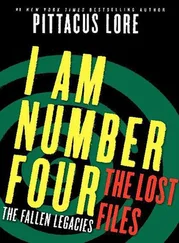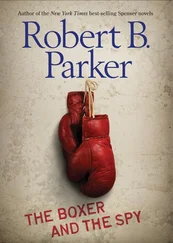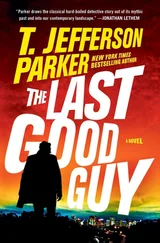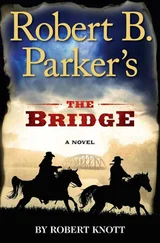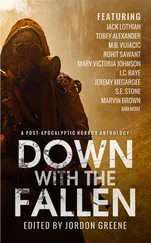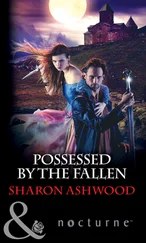“Have you ever watched the film that Garrett made about Samantha?”
“No,” said Stella. “Garrett told me he was making it. And I sat down with him once but could only watch just a few seconds. He mailed me a copy but I never played it.”
“I’ve seen it. It’s difficult. She was perfect.”
“I don’t think I could watch it,” she said. “See, Garrett... Garrett and I had very different reactions to what happened. Garrett wanted to preserve and possess — images, clothes, belongings, her room intact, exactly as it was. For almost six months, I did too. I collected and organized and preserved. Then I saw a white fire. The fire told me to let go. To give up trying to keep my daughter. It told me to forgive and remember, but not to dwell. It told me that if I buried myself with the objects of her life I would never be able to believe in her death. So I let go of most of her things. I allowed only a... reasonable number of her photographs in my home. I unburied myself. And the strangest transformation took place. When I was able to surrender Samantha’s life, I found a measurable quantity of peace. Garrett went deeper the other way. Later, coming from the opposite direction, he found the same peace that I had found.”
From the window I saw the women on the street go into an Italian restaurant. I wondered what it would be like to be single, with friends, and going out for eleven-fifteen drinks in the Gaslamp.
“I guess you’ve seen the video of your fall many times,” Stella said.
“I’ve never watched it.”
“Why not?”
“I think it might scare the piss out of me. Sorry for the language.”
“Your language is fine.”
Through the window I saw another jet heading down to Lindbergh Field. I thought of the lights in Las Vegas again and wondered where she was.
“That’s interesting we’ve both got videos we won’t watch,” said Stella. “Videos of the most important things in our lives, and we don’t want to see them.”
“I think ignoring certain things is good,” I said. “I don’t think people need to know everything.”
Her telephone rang again, startlingly loud in the high-ceilinged old room. It was a relief from having to talk about the Las Palmas. I still felt Malic close to me. I could still smell his breath.
Stella went into the kitchen. I could see her in the faint light as she picked up the phone. I heard without listening.
Hello? Oh, John... I’m feeling okay tonight, considering. You? Yeah, yeah, I know. I loved your words today about Garrett, I wanted to tell you again... Oh... Oh, I didn’t know that. Sure, I’d like to have it... Okay... Okay... Okay... I will. Good night.
Stella set the phone in its cradle and came back to the couch.
“Sorry. That was Van Flyke,” she said. “I left my memorial pamphlet at the grave site. He’s been a big help, but sometimes I think he’s taken this worse than I have.”
“Why do you think that?”
“He calls almost every day to make sure I’m okay, but he’s a wreck himself. I think he’s developing a crush on me. Under all that bossy cool, John’s got a good heart. He thought the world of Garrett. He treated Garrett like a big brother, even though John’s a few years older. I thought all that came across in the eulogy today.”
“I did, too.”
“So many people have offered help, gone out of their way for me,” she said. “Mom and Dad have been here for me. Samuel’s willing to do what he can, though he’s hurting, too. Abel Sarvonola’s trying to expedite the pension. The chief wants to create a memorial in Garrett’s honor. Sutherland and even Chet Fellowes have offered to take care of any financial or even household things that might need seeing to.”
“It’s nice when people surprise you.”
“Some surprises aren’t so nice. I understand why Garrett disliked Erik Kaven. He didn’t say one word to me until today. No call. No letter of condolence. No flowers sent to the chapel. He said nothing to the media about Garrett’s murder. Today he spoke to me just before he left. He looked at me as if I’d killed him myself and he said, ‘We must all look within ourselves at times like this.’ That’s all. End of statement. Like, if I looked far enough inside myself I’d find the murderer.”
I wondered how Kaven had risen to the directorship of the Ethics Authority on such a meager spirit. I thought of his shameless stare and his disheveled appearance. I wondered if underneath it — as underneath the dismissive arrogance of John Van Flyke — there was actually a decent guy with no idea how to express himself. I was not convinced there was. In my twenty-nine years of experience, I have found that most often people are exactly what they appear to be.
In the near dark I watched her move across the room to the stereo again. The tape quickly rewound then whined to a stop. I stood and went to the door.
“You can keep the tape,” I said. “I made it for you.”
“Thank you.”
“I’ll get this guy.”
“I know you will.”
I looked at the two dead bolt locks and the chain lock on Stella’s door, then closed it and took the stairs down. The east breeze had turned warm and I could feel spring advancing. I slung my jacket over my shoulder and walked through the Gaslamp to Salon Sultra and wondered when I would get it through my head that she didn’t work there anymore. I sat on a bus-stop bench opposite the salon and watched the occasional car roll by. I wondered when Vince Brancini would call.
I drove back to Normal Heights wondering if making Stella Asplundh a copy of that tape was the right thing to do. I put myself in her shoes and asked myself if I would want a tape of my last conversation with Gina. Yes, certainly. Then I asked myself if I would listen to it.
I wasn’t certain of that at all.
McKenzie and I stood in the shade of the Dream Wheels building late the next morning, while sketch artist Kathy Iles finished with Cass. Our St. Patrick’s Day temperature was supposed to hit eighty degrees by the afternoon.
Kathy is an exceptionally good sketch artist because she makes the subject look like a real person instead of a generality or type. I’m sure you’ve seen sketches, or Identikit drawings, that don’t quite look like real people. Kathy won’t settle for that. I think her secret is how calming she is, how “okay” she can make things seem, even though many of the people she interviews are victims of terrible crimes. She takes her time and gets details that other artists miss because the witnesses are so upset. Kathy’s a big, easygoing woman and she’s very sensitive to people’s mood changes. She became a police artist because her mother was killed in a botched convenience-store robbery by a man who was never identified and never caught.
“Sorry,” she said as we stood in Cass’s office and looked at the fresh sketch. “The hat, the sunglasses, the mustache. He looks more like a disguise than a man. This isn’t one of my best.”
“It’s what he looked like, though,” said Cass. “You got him, really, you did.”
“Well, thanks,” said Kathy.
Her rendition of Hummer Man showed a heavy-faced, blue-collar guy who, just as Cass had suggested, might be found on the back of his pickup truck at a Chargers tailgate party at Qualcomm Stadium. The sunglasses and thick mustache hid much of what might have been revealing. Kathy was right: This was not her best. Her Hummer Man was vague and generic.
Physically, the man in the sketch looked a little like Mincher, but Mincher was still too young. And Mincher had an affable, southern attitude about him that didn’t fit Cass’s “screw you” description of Hummer Man. Unless, of course, Mincher was a talented actor.
Читать дальше
